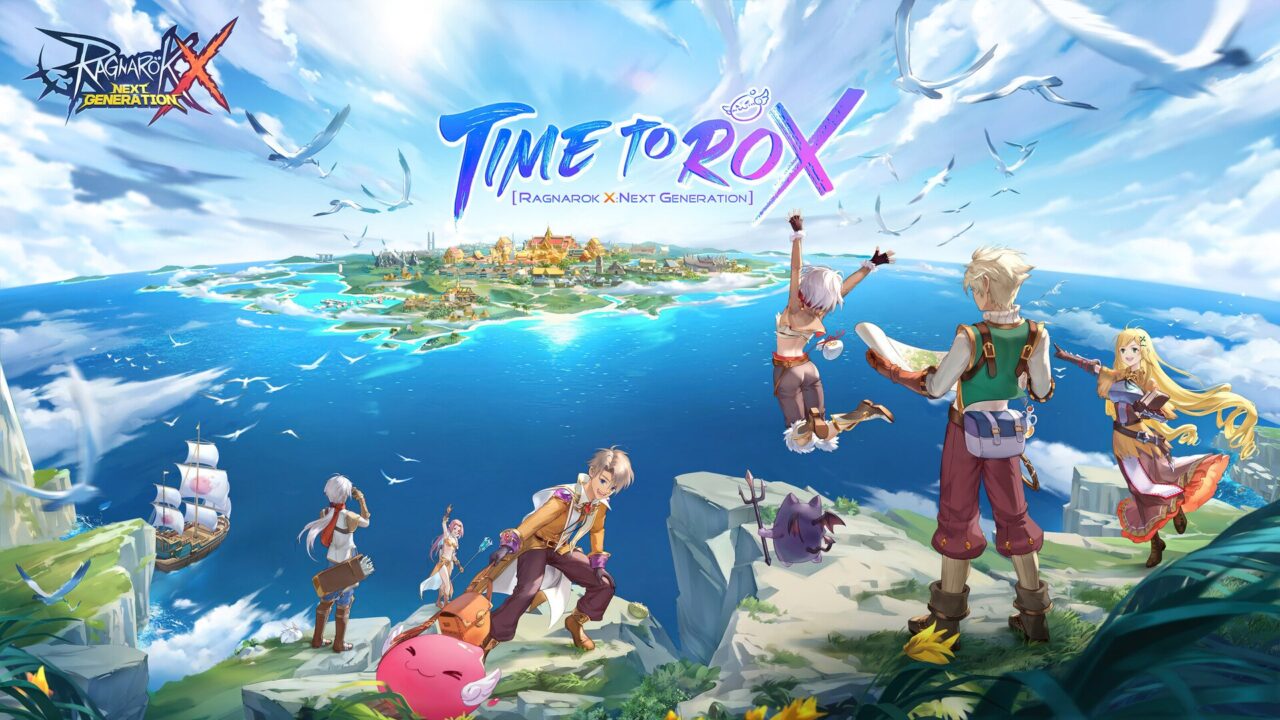Diablo IV is a 2023 multiplayer-only action role-playing game developed and published by Blizzard Entertainment. It is the fourth main installment in the Diablo series. Announced at BlizzCon 2019, the game was released on June 5, 2023 for the PlayStation 4 and PlayStation 5, Xbox One and Xbox Series X and S, and Microsoft Windows. Players create a character from one of five playable classes—Barbarian, Druid, Necromancer, Rogue, or Sorcerer—and use their skills to complete quests through combat.
The game had a lengthy early access period, with public betas available from March 2023 and official early access beginning on June 1.
Staple features returned from previous installments in the franchise, such as a focus on replayable, procedurally generated dungeons and loot-focused character-building, while also featuring mechanics new to the series, including an open world and player versus player combat.
Diablo IV received generally positive reviews from critics, who praised the dark atmosphere, engaging narrative and replay value.
Gameplay
The core formula for the series’ gameplay revolves around gradually obtaining stronger equipment by defeating increasingly difficult enemies. Enemies are fought using different character class skills which can be customized by equipment and talent trees. This concept is used to progress through the story and quests. Enemies are split into monster families which are defined by a theme, combat style, and their location. Each family contains different archetypes that hold different roles allowing for synergies of specialty abilities between family members. To differentiate between them, they have unique silhouettes, stances and weapons.
Creative director Sebastian Stepien explained that the goal was to create a more “grounded” story than Diablo III. In order to achieve this, the plot revolves around the simple folk of Sanctuary rather than “politics, kings, or another high-fantasy theme.”
The playable character’s effectiveness in combat is determined by their attributes and their boosts from equipped items. Offensive attributes include attack and critical chance which increase damage output. Defensive stats include elemental resistance and defense which increase how much damage can be taken. Diablo IV introduces three new attributes: Angelic, Demonic, and Ancestral Power. Angelic and Demonic Power alter the duration of beneficial and negative effects respectively. Ancestral Power increases the chance of effects being applied to another entity. Weapons and gear have increasing rarity which are a general indicator of their power. The rarest items have unique effects that alter more than just the character’s parameters. Gear can be further customized with runes and runewords. These items allow players to upgrade selected items with additional effects. They are split into two groups: condition runes, and effect runes. Effect runes describe the additional effects. Conditions runes describe the situations under which the effect runes will be active. These two items combine to form a runeword that then can be applied to an item. In an interview with lead game designer Joe Shely and senior producer Tiffany Wat, it was revealed that trading and crafting will be available in the game but will be limited to resources outside of the most powerful items. Limited-time seasons return to the game, which alter legendary powers to shift the meta-game.
Microtransactions are included in the form of cosmetic items. The game cannot be played offline and requires an internet connection.
Character classes
The Barbarian, Sorcerer, and Druid classes in the game’s demo
Five classes have been announced. The Barbarian, Sorcerer, and Druid classes were announced at BlizzCon 2019, while a fourth, the Rogue class, was announced at BlizzCon 2021. The fifth class, the Necromancer, was announced in 2022.
- The Barbarian (voiced by Ray Chase and Laila Berzins), which appears in Diablo II and Diablo III, has the ability to switch between weapons while in combat.
The Sorcerer (Joseph Balderrama and Maya Saroya), returning from the first game and Diablo II, is an elemental mage-type character wielding fire, ice, and lightning magic. - The Druid (Andrew Morgado and Courtenay Taylor), returning from Diablo II, can shapeshift between human, werewolf, and werebear forms, and possesses earthen and storm magics.
- The Rogue (Andres Williams and Anna Koval), returning from the first game, is a quick-moving combatant that alternates between bladed melee or ranged combat with a bow.
- The Necromancer (Jesse Burch and Elle Newlands), returning from Diablo II and Diablo III, utilizes dark magic for summoning and attacks.
Character appearance is customizable rather than being tied to a class. These include choosing a character portrait and the skin color of their character. Mount appearances can be customized. Skill trees exist, allowing for ability customization.
Environment
Players are able to traverse through five regions within the Diablo series world of Sanctuary: Scosglen, Fractured Peaks, Dry Steppes, Hawezar, and Kehjistan. Hell will also be a playable area. Procedurally generated dungeons are included, and consist of random layouts of interior and exterior environments. Dungeons are separately instanced, therefore non-party players will not appear. Sanctuary is a fixed area, therefore it does not have the procedurally-generated maps seen in the game’s dungeon. Scosglen is a forested coastal area home to druids, werewolves, and drowned-type enemies. Fractured Peaks is a snowy mountainous area containing deep cave systems. Dry Steppes resides in a desert that proves to be so harsh that the inhabitants have turned to cannibalism. Hawezar is home to witches, and has a swamp-type setting. Finally, Kehjistan is a war-ravaged wasteland containing the ruins of a once-prosperous civilization.
The game world is an open world setting; traveling between different regions or dungeons has no loading screens. Additionally, each region can be completed in any order as decided by the player. In order to support these new changes, enemies are scaled to the player (or the party leader in multiplayer) and the story is non-linear. Hardcore mode is present in the game. Select areas within each region have player interactions restricted until sufficient milestones in the story are reached, and such progress will be synced to that of the party leader. Over-world areas have non-party player interactions such as PVP, and boss events that passing players can join. Player population in the world will shift depending on the area. Large settlements will display large populations, and to enforce a sense of desolation, more wild zones will change the number of players shown to others.
When questioned about Diablo IV’s atmosphere, ex-game director Luis Barriga stated: “We want users to feel like they’re in a medieval city.” For the first time in the series all assets are standard 3D game assets and terrain has elevation, allowing for in-game cinematics, and environment interaction.
Setting
Set in the Diablo series’ world of Sanctuary, Diablo IV takes place 50 years after the events of Diablo III: Reaper of Souls. Cultists have summoned the main antagonist and daughter of Mephisto, Lilith (Caroline Faber). After the events of previous games, the forces of demons and angels have been depleted, allowing an opening for her to establish power in Sanctuary.
Thousands of years before the game’s events, Lilith and the angel Inarius (Gabe Kunda) created the realm of Sanctuary to provide refuge for those who wished to escape the eternal conflict between the High Heavens and the Burning Hells. This demon-angel relationship led to the birth of the Nephalem, a race that the protagonist falls under; neither Angel nor Demon, but a distinct combination of both. Those in Sanctuary believed that this power would bring attention to their shelter and, as a result, the inhabitants spoke of destroying them. Lilith, not wanting her children to be killed, destroyed any that opposed her, causing Inarius to banish her to the void.
Plot
The player character, known as “the Wanderer”, is drugged by villagers corrupted by Lilith and fed petals of her blood, creating a connection to her. After escaping, the Wanderer meets Lorath Nahr (Ralph Ineson), one of the last Horadrim, who returns from Diablo III: Reaper of Souls and explains the prophecy of Lilith’s return. Inarius believes he alone can fulfill the prophecy by killing Lilith, which will allow him to return to Heaven. Aided by a young woman named Neyrelle (Judy Alice Lee), the Wanderer enters the sanctum of Rathma, the first Nephalem and founder of the Necromancers. Inside, Rathma’s spirit (Scott Whyte) reveals he had a key to Hell. When Inarius demands the key from him, Rathma refuses, and Inarius kills him; Lilith later finds the key. The Wanderer then journeys to Scosglen to meet another Horadrim named Donan (James Goode), who had defeated a demon called Astaroth (David Lodge) with the aid of two Druids years before. Lilith corrupts the two Druids to find Astaroth’s prison and frees him, in exchange for safe passage through Hell. Astaroth possesses Donan’s son Yorin (Thierry Mabonga), who dies when the demon is defeated. Donan recovers the Soulstone used to trap Astaroth, and prepares to alter it in order to trap Lilith.
Rejoining Lorath in the Dry Steppes, the Wanderer pursues Lorath’s former apprentice Elias (Anthony Howell), who summoned Lilith to Sanctuary. Though Elias cannot be killed, the Wanderer and Lorath retrieve an artifact called the Sightless Eye to discover Lilith’s plan: To summon the Lesser Evils to empower humanity against the Prime Evils. She also intends to consume the essence of her father Mephisto (Steve Blum) while he is weak, and use his power to conquer Hell. Elias uses a witch named Taissa (Cherise Boothe) as a vessel to summon Andariel, the Maiden of Anguish, who is defeated by the Wanderer. Seeking to break Elias’ immortality, the Wanderer and the Horadrim journey to the swamps of Hawezar. Elias had claimed knowledge from an enchanted “Tree of Whispers”, but failed to pay the price – his own head – for that knowledge. Learning that Elias has contained his life essence in his own severed finger, the Wanderer destroys it, before finally defeating Elias; the spirits of the Tree then claim Elias’ head.
From the Tree, Lorath learns of a gateway to Hell beneath the city of Caldeum, opened using Rathma’s key. In Caldeum, the Wanderer defeats another reformed Lesser Evil, Duriel, the Lord of Pain. Inarius goes ahead into Hell to confront Lilith, who kills him. Donan is mortally wounded, and Lorath remains behind, leaving the Wanderer and Neyrelle to pursue Lilith to Mephisto’s Cathedral of Hatred. Mephisto himself, having appeared as a bloodied wolf throughout the Wanderer’s journey, urges them to focus on Lilith, but Neyrelle chooses to use the Soulstone to contain Mephisto instead, believing him to be the greater threat. The Wanderer then faces Lilith and defeats her. As she dies, Lilith warns that without her, there could be no victory over the Prime Evils.
With both creators of Sanctuary dead, the party returns home. Neyrelle ventures off on her own with the Soulstone, knowing the Prime Evils are coming, and hoping to find a way to defeat them for good.




